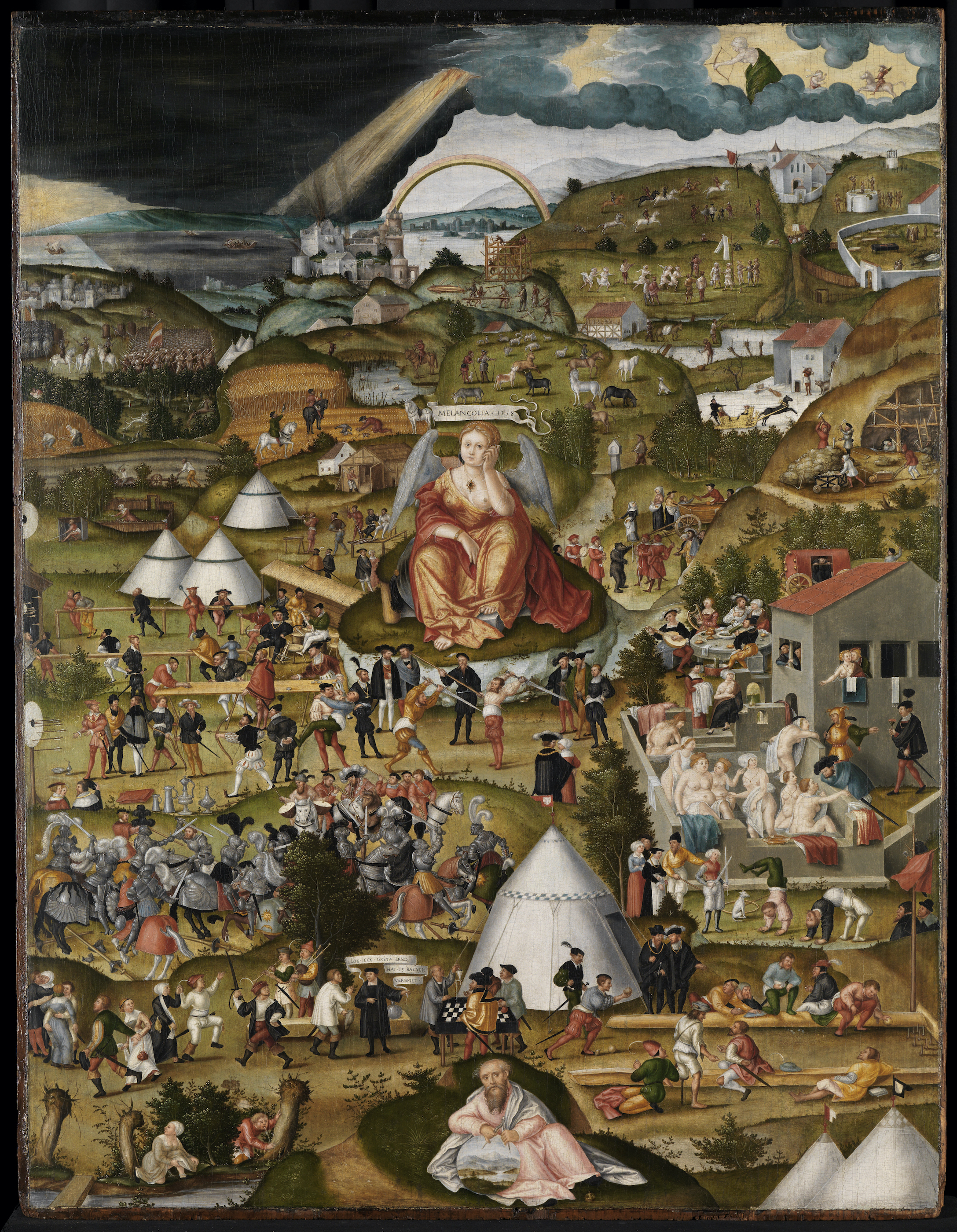Scholarly and edifying allusions and allegories often provided a guise for moralizing insights on life, humanity, and the course of the world. The enthusiasm for this sort of representation is illustrated in the painting we present today by Mathis Gerung. Depicted here as an idle, rather lascivious and wasteful winged figure, this Melancholy is the opposite of the character in Dürer's famous masterwork from 1514 in almost every way. She sits at the center of a wide world landscape, divided into small parcels. Tournaments are taking place, people of all ranks are enjoying themselves, whether gambling or in a brothel, but farmers are also seen cultivating their fields, and laborers are working in a mine. The four seasons are presented simultaneously, war and peace coexist, and new half-timbered buildings are being constructed next to collapsing and turning fortifications.
All of this and more occurs under the influence of the Sol, Luna, and Mars, personified on the upper edge of the painting. Saturn, the planet that controls the melancholy temperament and symbolizes the pursuit of knowledge, appears in the small figure of a geometrician on the lower edge of the painting. In this way, the painting illustrates the totality of existence, its transience and human beings' subjection to higher, cosmic, metaphysical powers.
We present today's work thanks to the Staatliche Kunsthalle Karlsruhe. :)


 Mathis Gerung
Mathis Gerung